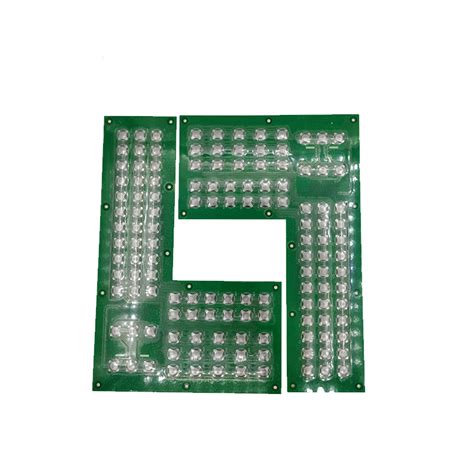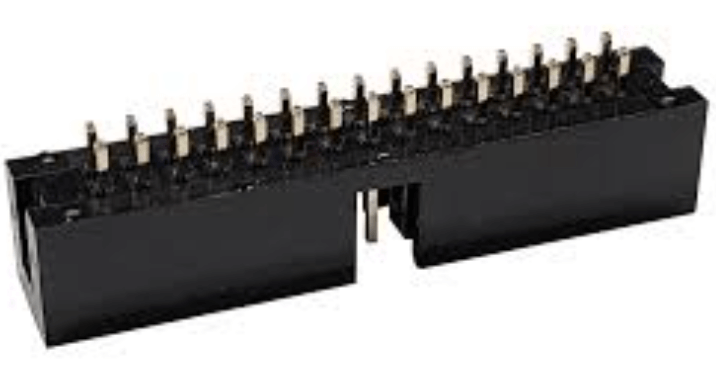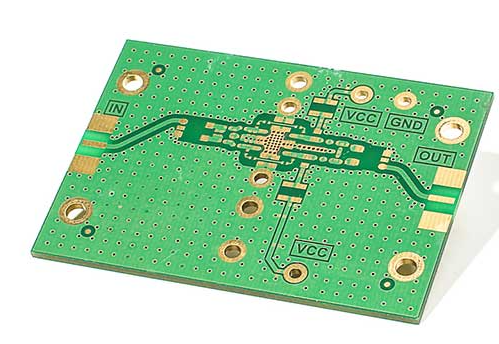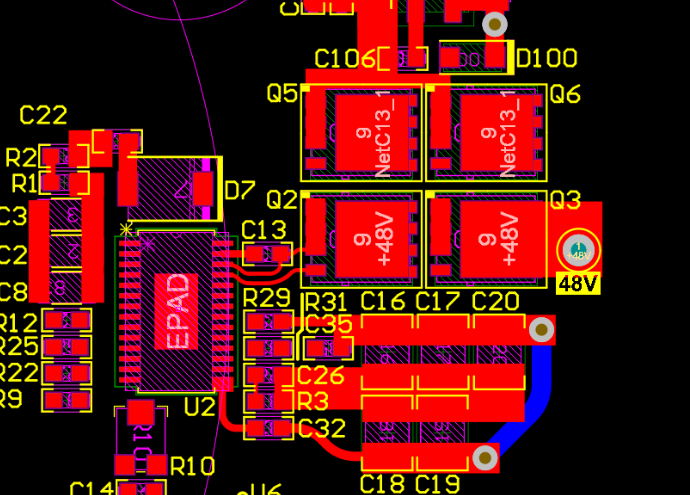High frequency considerations in pcb
Signal Integrity Challenges in High-Frequency PCB Design
In the realm of high-frequency printed circuit board (PCB) design, signal integrity emerges as a paramount concern, demanding meticulous attention to detail and a comprehensive understanding of electromagnetic principles.
As electronic devices continue to evolve, operating at increasingly higher frequencies, the challenges associated with maintaining signal integrity become more pronounced.
This necessitates a strategic approach to PCB design, where every aspect, from material selection to trace layout, plays a crucial role in ensuring optimal performance.
To begin with, one of the primary challenges in high-frequency PCB design is the management of signal loss.
At elevated frequencies, signals are more susceptible to attenuation, which can significantly degrade performance. This attenuation is often exacerbated by the dielectric properties of the substrate material. Therefore, selecting a substrate with low dielectric loss is essential to minimize signal degradation. Furthermore, the choice of conductor material and its surface finish can also impact signal integrity, as rough surfaces can increase resistance and, consequently, signal loss.
In addition to material considerations, the physical layout of the PCB is critical in addressing signal integrity challenges.
High-frequency signals are particularly sensitive to impedance mismatches, which can lead to reflections and signal distortion. To mitigate these effects, designers must ensure that transmission lines are properly matched to their characteristic impedance. This involves careful calculation and design of trace widths and spacing, as well as the use of controlled impedance techniques. Moreover, maintaining consistent trace geometry throughout the PCB is vital to prevent impedance discontinuities.
Another significant factor influencing signal integrity in high-frequency PCBs is crosstalk, which occurs when signals on adjacent traces interfere with each other.
This phenomenon is more pronounced at higher frequencies due to the increased coupling between traces. To combat crosstalk, designers can employ strategies such as increasing the spacing between traces, using ground planes to provide isolation, and implementing differential signaling techniques. These measures help to reduce electromagnetic interference and preserve signal fidelity.
Furthermore, the role of vias in high-frequency PCB design cannot be overlooked.
Vias, which are used to connect different layers of a PCB, can introduce parasitic inductance and capacitance, adversely affecting signal integrity. To minimize these effects, it is advisable to use blind or buried vias, which do not pass through the entire board, thereby reducing their impact on high-frequency signals. Additionally, minimizing the number of vias in critical signal paths can help maintain signal quality.
Thermal management is another aspect that intersects with signal integrity in high-frequency PCB design.
As frequencies increase, so does the power consumption, leading to potential thermal issues. Excessive heat can alter the electrical properties of materials, further complicating signal integrity. Therefore, effective thermal management strategies, such as the use of thermal vias, heat sinks, and appropriate board materials, are essential to ensure reliable operation.
In conclusion, addressing signal integrity challenges in high-frequency PCB design requires a holistic approach that encompasses material selection, layout optimization, and thermal management. By understanding and mitigating the factors that contribute to signal degradation, designers can create PCBs that perform reliably at high frequencies. As technology continues to advance, the importance of mastering these considerations will only grow, underscoring the need for ongoing research and innovation in the field of high-frequency PCB design.

Material Selection for High-Frequency PCBs
When designing printed circuit boards (PCBs) for high-frequency applications, the selection of materials becomes a critical factor that can significantly influence the performance and reliability of the final product. As electronic devices continue to evolve, operating at increasingly higher frequencies, the demand for materials that can support these frequencies without compromising signal integrity has grown. Therefore, understanding the properties and implications of different materials is essential for engineers and designers working in this field.
To begin with, one of the primary considerations in material selection for high-frequency PCBs is the dielectric constant, often denoted as εr.
This property measures a material’s ability to store electrical energy in an electric field and directly affects the speed at which signals can propagate through the PCB. Materials with a lower dielectric constant are generally preferred for high-frequency applications because they allow signals to travel faster, reducing signal delay and improving overall performance. Common materials such as FR-4, while cost-effective, may not always meet the stringent requirements of high-frequency applications due to their relatively high dielectric constant. Instead, materials like PTFE (Polytetrafluoroethylene) and ceramics are often chosen for their lower dielectric constants and superior high-frequency performance.
In addition to the dielectric constant, the loss tangent, or dissipation factor, is another crucial parameter.
This factor indicates how much of the signal power is lost as heat within the material. A lower loss tangent is desirable as it ensures minimal signal attenuation, which is particularly important in high-frequency applications where even small losses can lead to significant degradation of signal quality. Advanced materials such as Rogers laminates are specifically engineered to have low loss tangents, making them suitable for applications like RF and microwave circuits.
Moreover, thermal management is a vital aspect to consider when selecting materials for high-frequency PCBs.
As frequencies increase, so does the potential for heat generation, which can adversely affect both the performance and longevity of the PCB. Materials with high thermal conductivity are advantageous as they facilitate efficient heat dissipation, thereby maintaining the stability of the circuit. This is particularly important in applications such as power amplifiers and radar systems, where excessive heat can lead to component failure.
Furthermore, the coefficient of thermal expansion (CTE) is another factor that cannot be overlooked.
A mismatch in CTE between the PCB material and the components can lead to mechanical stress during thermal cycling, potentially causing delamination or solder joint failure. Therefore, selecting materials with a CTE that closely matches that of the components is essential to ensure mechanical reliability.
Finally, cost considerations also play a role in material selection.
While high-performance materials like PTFE and ceramics offer superior electrical properties, they are often more expensive than traditional materials like FR-4. Therefore, a balance must be struck between performance requirements and budget constraints. In some cases, hybrid constructions that combine different materials may be employed to optimize both performance and cost.
In conclusion, the selection of materials for high-frequency PCBs involves a careful evaluation of various properties, including dielectric constant, loss tangent, thermal conductivity, and CTE. By understanding these factors and their impact on high-frequency performance, designers can make informed decisions that enhance the functionality and reliability of their PCBs, ultimately leading to more efficient and effective electronic devices.

Techniques for Minimizing Electromagnetic Interference in High-Frequency PCBs
In the realm of high-frequency printed circuit boards (PCBs), minimizing electromagnetic interference (EMI) is a critical consideration for ensuring optimal performance and reliability. As electronic devices become more complex and operate at higher frequencies, the potential for EMI increases, necessitating the implementation of effective techniques to mitigate its impact.
One fundamental approach to minimizing EMI in high-frequency PCBs is through careful layout design.
By strategically placing components and routing traces, designers can reduce the loop areas that are susceptible to electromagnetic coupling. This involves keeping high-frequency signal paths as short as possible and ensuring that return paths are directly beneath their corresponding signal traces, thereby minimizing loop inductance and reducing the potential for radiated emissions.
In addition to layout considerations, the use of ground planes is another essential technique for EMI reduction. Ground planes act as a reference point for signals and provide a low-impedance path for return currents, which helps to contain electromagnetic fields within the PCB. By incorporating a continuous ground plane, designers can effectively shield sensitive components from external interference and prevent the propagation of unwanted signals. Furthermore, the implementation of multiple ground planes in a multilayer PCB can enhance isolation between different circuit sections, thereby reducing crosstalk and improving overall signal integrity.
Another critical aspect of minimizing EMI in high-frequency PCBs is the selection of appropriate materials.
The dielectric properties of the substrate material can significantly influence the board’s electromagnetic performance. Materials with low dielectric constant and low loss tangent are preferred, as they help to reduce signal attenuation and maintain signal integrity at high frequencies. Additionally, the use of materials with high thermal conductivity can aid in dissipating heat generated by high-frequency components, thereby preventing thermal-induced EMI issues.
Moreover, the incorporation of filtering components is a practical technique for EMI mitigation.
By using capacitors and inductors strategically placed in the circuit, designers can filter out unwanted high-frequency noise and prevent it from affecting sensitive components. These components can be used in conjunction with ferrite beads, which are effective in suppressing high-frequency noise by providing a high impedance path to ground. The careful selection and placement of these filtering components are crucial to ensure that they do not introduce additional parasitic effects that could compromise the board’s performance.
Transitioning to another important consideration, shielding is a widely used technique to protect high-frequency PCBs from external electromagnetic fields.
By enclosing the PCB or specific components within a conductive enclosure, designers can prevent external EMI from penetrating the board and affecting its operation. This is particularly important in environments with high levels of electromagnetic pollution, where shielding can be the difference between a functional and a malfunctioning device.
Finally, it is essential to consider the impact of connectors and cables on EMI performance.
Poorly designed or improperly terminated connectors can act as antennas, radiating unwanted signals and introducing EMI into the system. Therefore, selecting connectors with appropriate shielding and ensuring proper termination techniques are employed can significantly reduce EMI issues.
In conclusion, minimizing electromagnetic interference in high-frequency PCBs requires a comprehensive approach that encompasses layout design, material selection, filtering, shielding, and connector considerations. By implementing these techniques, designers can enhance the electromagnetic compatibility of their PCBs, ensuring reliable operation in increasingly complex and high-frequency electronic environments.

Importance of Controlled Impedance in High-Frequency PCB Layouts
In the realm of high-frequency printed circuit board (PCB) design, the concept of controlled impedance emerges as a critical factor that significantly influences the performance and reliability of electronic circuits. As electronic devices continue to evolve, operating at increasingly higher frequencies, the need for precise impedance control becomes paramount. This necessity stems from the fact that at high frequencies, the behavior of electrical signals is profoundly affected by the physical characteristics of the PCB traces, which act as transmission lines. Consequently, understanding and implementing controlled impedance is essential for ensuring signal integrity and minimizing potential issues such as signal reflection, crosstalk, and electromagnetic interference.
To begin with, controlled impedance refers to the practice of designing PCB traces with specific impedance values, which are determined by the trace geometry, the dielectric material properties, and the surrounding environment.
This is particularly important in high-frequency applications where the wavelength of the signals approaches the dimensions of the PCB traces. In such scenarios, any mismatch in impedance can lead to signal reflections, which degrade the signal quality and can cause data errors. By maintaining a consistent impedance along the transmission path, designers can ensure that signals are transmitted with minimal distortion, thereby preserving the integrity of the data being communicated.
Moreover, controlled impedance is crucial for maintaining the timing and synchronization of signals in high-speed digital circuits.
As signal frequencies increase, the rise and fall times of digital signals become shorter, making them more susceptible to timing errors caused by impedance mismatches. These mismatches can introduce delays and skew in signal propagation, leading to timing violations that can compromise the functionality of the entire system. By carefully designing the PCB layout to achieve controlled impedance, designers can mitigate these risks and ensure that signals arrive at their destinations in a timely and synchronized manner.
In addition to signal integrity and timing considerations, controlled impedance also plays a vital role in minimizing crosstalk between adjacent traces on a PCB.
Crosstalk occurs when a signal in one trace induces an unwanted signal in a neighboring trace, which can lead to data corruption and system malfunctions. At high frequencies, the likelihood of crosstalk increases due to the proximity of traces and the higher energy levels of the signals. By designing traces with controlled impedance, designers can reduce the coupling between traces, thereby minimizing the potential for crosstalk and enhancing the overall performance of the PCB.
Furthermore, the implementation of controlled impedance is essential for compliance with electromagnetic compatibility (EMC) standards.
High-frequency signals can generate electromagnetic emissions that interfere with other electronic devices, leading to regulatory compliance issues. By ensuring that PCB traces have controlled impedance, designers can reduce the levels of electromagnetic emissions and improve the EMC performance of the device. This not only helps in meeting regulatory requirements but also enhances the reliability and robustness of the electronic system in real-world operating environments.
In conclusion, the importance of controlled impedance in high-frequency PCB layouts cannot be overstated. It is a fundamental aspect of modern electronic design that directly impacts signal integrity, timing accuracy, crosstalk reduction, and electromagnetic compatibility. As technology continues to advance and the demand for high-speed, high-frequency devices grows, the need for precise impedance control will only become more critical. Therefore, designers must prioritize controlled impedance in their PCB layouts to ensure the optimal performance and reliability of their electronic products.






